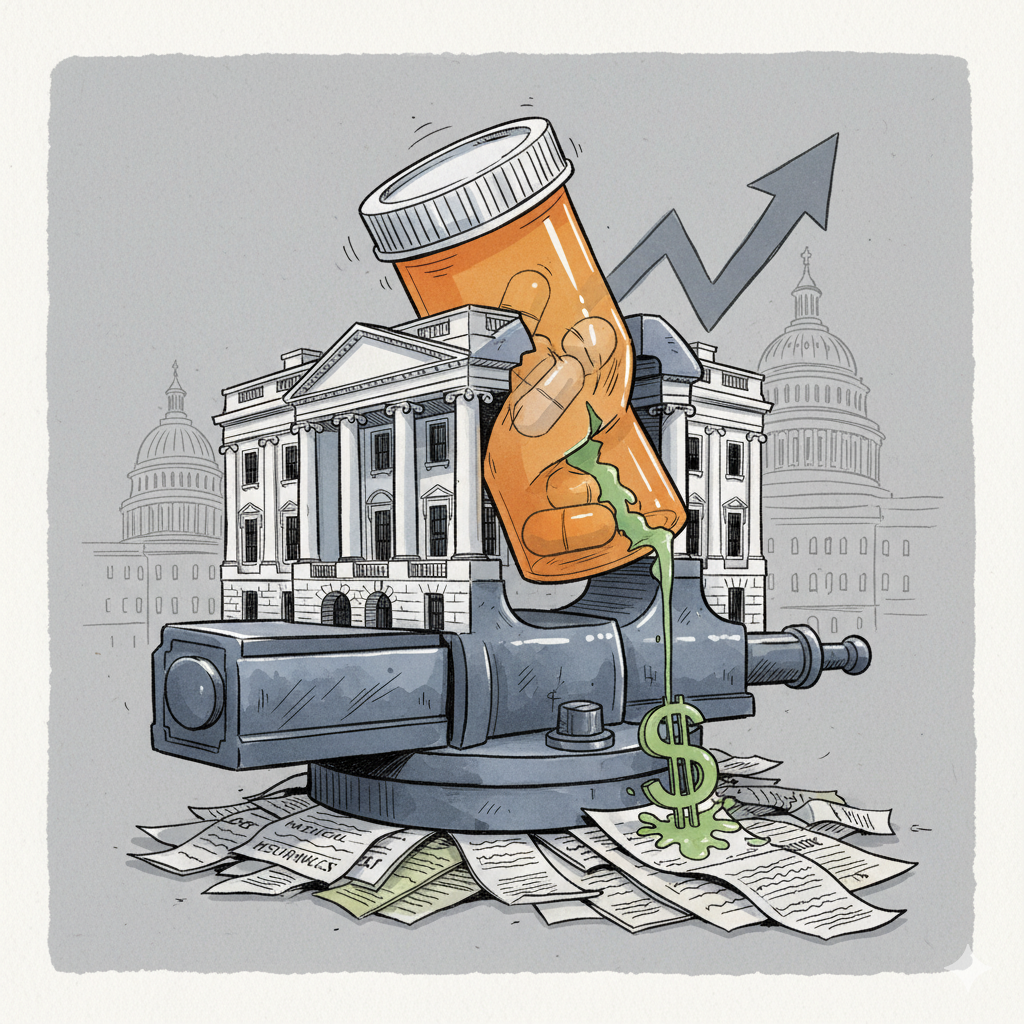1. Executive Summary: A Strategic Compact of Political Imperative and Commercial Pragmatism
On October 10, 2025, the Trump administration and AstraZeneca PLC announced a landmark agreement.¹ The deal aims to lower prescription drug prices for American consumers.²
This is the second agreement of its kind, following a similar pact with Pfizer Inc. in September 2025.³ It is a direct result of the administration’s aggressive “Most Favored Nation” (MFN) policy. This policy seeks to align U.S. drug prices with the lowest prices that other developed nations pay.⁴
The agreement is not a simple price reduction. It is a complex strategic maneuver, born from a convergence of political needs and commercial pragmatism.
For the Trump administration, the deal represents a tangible, high-profile victory in its war on high drug prices—a key issue for the American electorate.² For AstraZeneca, it is a calculated measure to mitigate significant risk. The company faced a credible threat from the administration of tariffs up to 100% on imported pharmaceuticals.⁵
The deal’s structure is dual-pronged. Each prong is designed to achieve distinct political and policy objectives.
- First, AstraZeneca made a broad, portfolio-wide commitment. The company will offer all of its prescription medications to the U.S. Medicaid program at MFN prices.⁶ This component gives the agreement policy substance. It allows the administration to claim a comprehensive victory that will save taxpayers “hundreds of millions of dollars”.²
- Second, the deal includes a narrower, more publicly visible component. Specific, high-profile drugs will be offered at steep discounts directly to consumers. This will occur through a new government-branded platform, TrumpRx.gov, set to launch in 2026.⁷ This element provides the political optics, translating complex policy into a simple message of direct savings.
The central thesis of this analysis is that the agreement’s direct impact on drug affordability for most Americans will be minimal. This includes those covered by commercial insurance or Medicare. While the deal is a significant political achievement for the Trump administration and a shrewd strategy for AstraZeneca, its tangible benefits are limited.
Multiple independent healthcare economists and policy experts support this conclusion. They note that the deal’s primary financial impact is contained within the Medicaid program. This program already benefits from substantial statutory discounts.⁸
Therefore, the deal’s true significance is not a fundamental reordering of U.S. drug pricing. Instead, it establishes a powerful new coercive framework. In this framework, the administration weaponizes trade policy to achieve healthcare policy objectives. This sets a potent precedent for all future government-industry negotiations.
1.1. Key Takeaways
- A Political Victory Achieved Through Coercion: The agreement is a major political win for the Trump administration. It was secured by leveraging the credible threat of severe tariffs to compel AstraZeneca to adopt “Most Favored Nation” (MFN) pricing for the Medicaid program.⁴
- A Strategic Decision for AstraZeneca: For the pharmaceutical company, the deal is a pragmatic move. It neutralizes the existential risk of tariffs, securing a three-year exemption and market stability in exchange for price concessions in a limited market segment.⁴
- Minimal Impact for Most Insured Americans: The deal’s financial benefits are largely confined to government savings within the Medicaid program.⁹ Cash-paying patients using the new TrumpRx.gov platform will also benefit. The agreement is not expected to lower premiums or out-of-pocket costs for the majority of Americans with commercial insurance or Medicare coverage.¹⁰
- A New Precedent in Policy: The agreement’s true significance lies in its method. It establishes a powerful new playbook where the executive branch uses trade policy as a coercive tool to achieve domestic healthcare objectives. This bypasses traditional legislative and regulatory pathways.
- A Direct Challenge to PBMs: The creation of the TrumpRx.gov direct-to-consumer (DTC) platform represents a clear challenge to the business model of Pharmacy Benefit Managers (PBMs). However, its long-term ability to disrupt the market remains uncertain.¹¹

